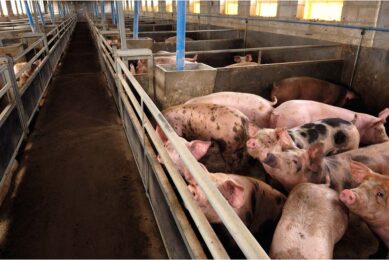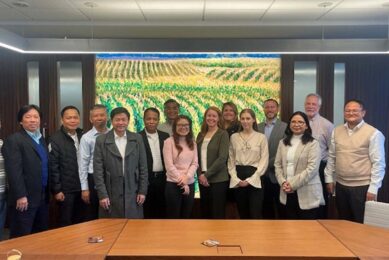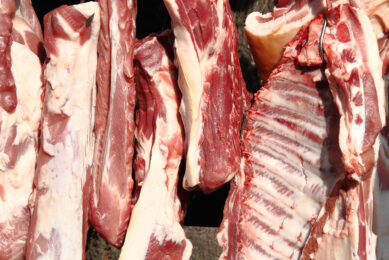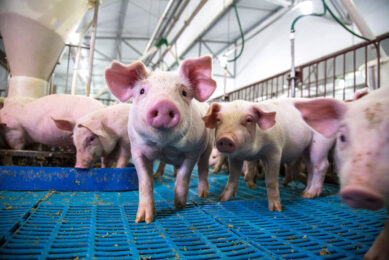What the IPVS has meant for Canadian swine vets
Long before Canada won the bid in Copenhagen to host IPVS 2010 in Vancouver, IPVS had already had a profound impact on the swine veterinary community in Canada. The decision to mount a bid to host an IPVS in Canada got us to finally organise a national swine veterinary association, the Canadian Association of Swine Veterinarians (CASV).
The main reason for this lengthy delay in forming a CASV rests in how our swine veterinary organisations developed. The strength of the swine veterinary community in Canada has been in the regional (Provincial) swine veterinary associations. These regional associations are:
©
* Association des vétérinaries en industrie animale (AVIA) in Québec
* Ontario Association of Swine Veterinarians (OASV) in Ontario
* Western Canadian Association of Swine Veterinarians (WCASV) in Western Canada
Major swine production
These three associations cover all the provinces with major swine production in Canada, namely Québec, Ontario and Western Canada. The Western Canadian provinces include, from east to west, the provinces of Manitoba, Saskatchewan, Alberta and British Columbia. Vancouver, site of the IPVS in July this year, is in British Columbia. These organisations all started about the same time and have all been in operation for the last 30-35 years.
I should, however, go back more than two decades to the late 1980s when our first bid to host an IPVS in Canada was made. To do so we had to form a national swine veterinary association. So a national association was hastily created. The bid to host an IPVS failed in 1990 in Lausanne, Switzerland and so too did the fledgling national swine veterinary association and activities reverted back to the three regional associations, all of which continued to have regular meetings and other activities.
Feasibility study
Fast forward to the new millennium. In March 2003, a meeting was called of all Canadian swine veterinarians attending the American Association of Swine Veterinarians (AASV) annual meeting in Orlando, Florida.
At that meeting, I was assigned the task of conducting a feasibility study to determine what could be done for Canada to host an IPVS, in which Canadian city and how should we go about putting a bid together. That was the pivotal moment for the launch of the CASV.
Starting from scratch, an executive committee was formed with representatives from the regional associations. A small group was assigned the task of creating a constitution and the CASV was open for business. All members of the regional associations automatically became members of the CASV. The regional associations started collecting dues from their members for the CASV. Since then an annual meeting has been held each year on the Sunday morning at the AASV. The CASV established a website.
Swine issues
It seemed to take forever, but in retrospect it was a matter of months, definitely within the first year of its formation, that the CASV was being consulted on far-reaching issues related to swine. The CASV became the ‘go-to’ group for anything and everything dealing with swine that had an inkling of veterinary involvement. Very instrumental in getting quick recognition was that many members from the regional associations were already on various regional and national committees.
These members then started referring matters that were of national concern over to the CASV, giving very quick recognition to the newly formed organisation. The Canadian Veterinary Medical Association (CVMA), the Canadian Food Inspection Agency (CFIA), the federal government’s arm that has the greatest direct contact and interaction with practicing veterinarians, the Canadian Pork Council (CPC), the national organisation representing Canadian pork producers now all have ongoing dialog with the CASV on matters of national swine veterinary interest.
Responding to issues
The CASV has since been involved in responding to issues of drug use policy, pain control in farm animals, melamine contaminated dog food being fed to pigs, appropriate response to pH1N1 in Canadian swine herds and hog barn workers.
Currently the CASV has been asked by the CPC and the CFIA to conduct the auditing and verification of removal of sows in the federal CAN$50 million (US$48 million) cull breeding swine programme of 2008 and the follow-up 2009 CAN$75 million (US$72 million) whole-herd hog farm transitional programme.
CASV members currently sit as chairs and many more as members on various committees of the newly formed Canadian Swine Health Board (CSHB). A few weeks ago, the secretary of the CASV was appointed research co-ordinator of the CSHB.
All of this triggered by the desire to host an IPVS in Canada.
Join 18,000+ subscribers
Subscribe to our newsletter to stay updated about all the need-to-know content in the pigsector, three times a week. Beheer
Beheer










 WP Admin
WP Admin  Bewerk bericht
Bewerk bericht